Succulents are popular plants because they are easy to care for. They don’t need much water or attention to keep growing. Many are small, so they fit in anywhere.
Here are some examples of pink succulents to add to your collection.

What Are Succulents?
Succulents are plants that store water in their leaves, roots, and stems. This makes the leaves appear fleshy and thick. Succulents do this to survive in dry deserts and other hot climates.
Pink Plants Versus Pink Flowers
While a pink succulent plant may have pink flowers, it may also have other colored blooms. Pink flowering succulents can be any color. This article deals only with succulents who have some pink on their leaves or stem.
General Succulent Care
Succulents are unique in that they can go for long periods of time without much care. In general:
- Overwatering causes root rot and death in these plants.
- Make sure that you place succulents in a well-draining potting mix formulated for cactus and succulents.
- Make sure the pot has drainage holes.
- Water when the soil gets dry, usually once a week in the spring and summer and once every two or three weeks in the late fall and winter.
- Water the succulent until water runs out of the drainage holes.
- Empty water out of the pot saucer after watering.
- In general, succulents require at least six hours of sun a day, although the direct sun can cause sunburn, bright, indirect sun is best.
- Stressing the plant by letting it dry out between waterings and placing it in bright indirect sunlight usually enhances the pink parts of the plant.
Pink Succulents
Succulents come in many shades of pink. Here are examples of succulents that vary in the shade of pink they present to the world.
Light Pink
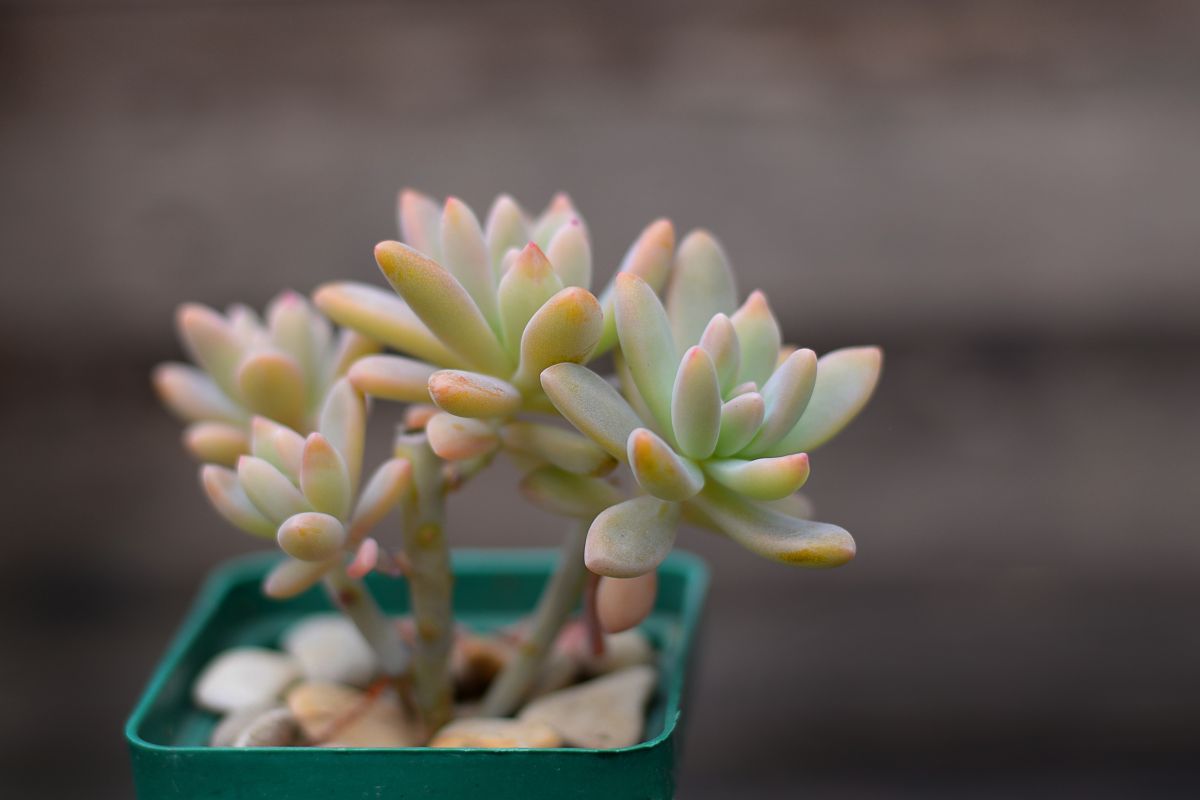
Graptosedum ‘Francesco Baldi’ has narrow, plump leaves growing in a rosette. The leaves are green and become light pink closer to the tips. The flowers are star-shaped. The rosettes of this plant form on stems that grow longer, leaving a colony of rosettes. This plant can grow to six inches tall with a diameter of five inches per rosette.

Ghost Plant (Graptopetalum paraguayense) looks a bit like a hedgehog with leaves sticking out in all directions. The leaves have a blush of light pink on them. The more sun they get, the more pink they have.
Medium Pink
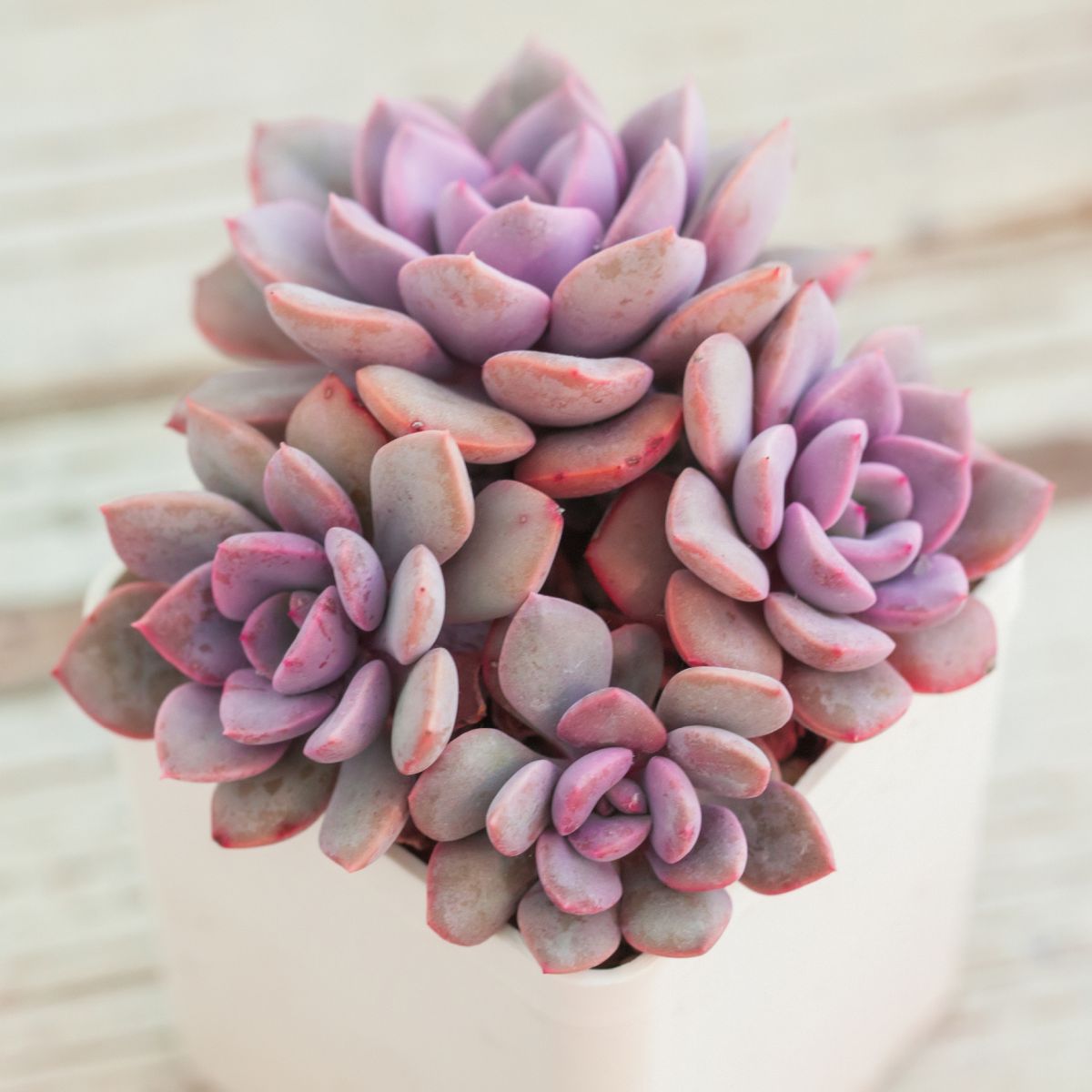
Graptoveria ‘Debbie’ has leaves in a circle without a central stem. The leaves are a pastel pink that turns into reddish pink in bright sunlight.

Corn Cob Cactus (Euphorbia mammillaris) are actually succulents, despite the name. These succulents form layers of rosettes. The top layer is a medium pink, while the older layers are a pastel green.

Sedum versadense is a pink succulent that grows up to six inches tall. It is from Mexico. The stems are hairy but the leaves are not.
Dark Pink

Sunrise succulent or sand rose (Anacampseros rufescens) is from South Africa. The leaves can be dark pink, green, or purple with a white thread around the edges of the leaf. It is a low-growing ground cover.
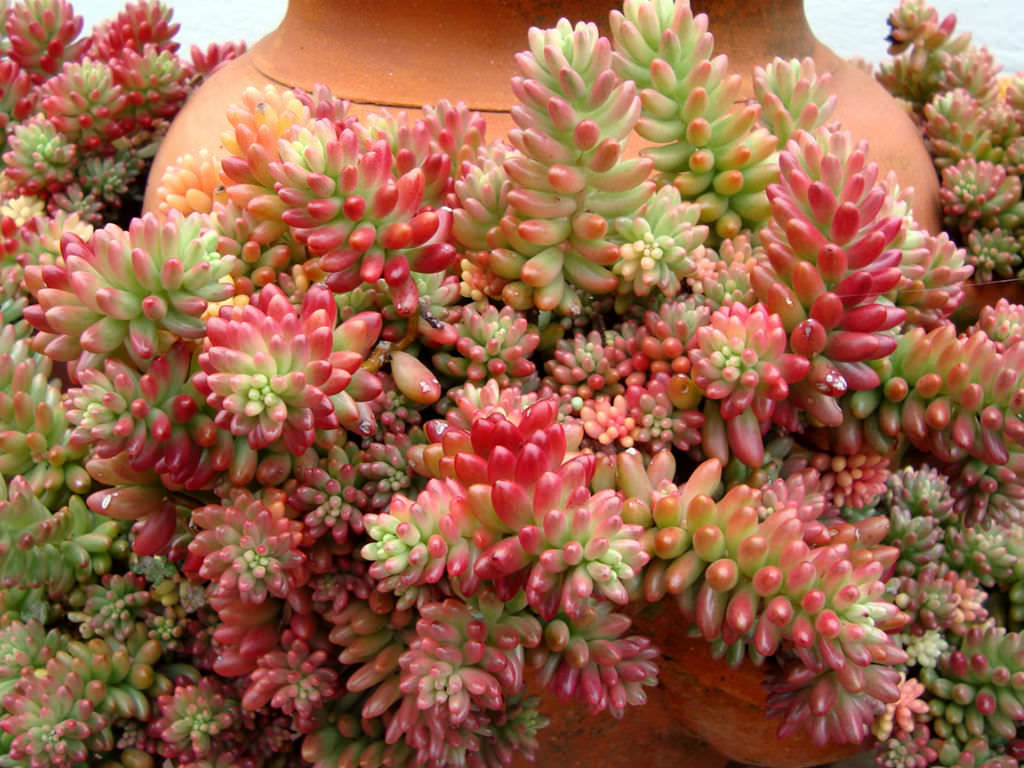
Pink Jellybeans or Pink Pork and Beans (Sedum Rubrotinctum ‘Aurora’) have jellybean-shaped leaves of green and dark pink. The plant gets redder the more sunlight it gets. The flowers are bright yellow.

Sedeveria ‘Pink Ruby’ is a beautiful dark pink succulent from fall to spring. It may fade to green during the summer.
Patterns of Pink
Not only do pink succulents come in different shades, but they also have pink in different parts of the plant and sometimes in different patterns.
Variegated

Calico Kitten Crassula (Crassula Pellucida) has leaves of different shades of green that are variegated with pink. The edges are outlined in dark pink. The leaves turn dark purple in the sun. The flower is white. This is a trailer so works well in a hanging basket.
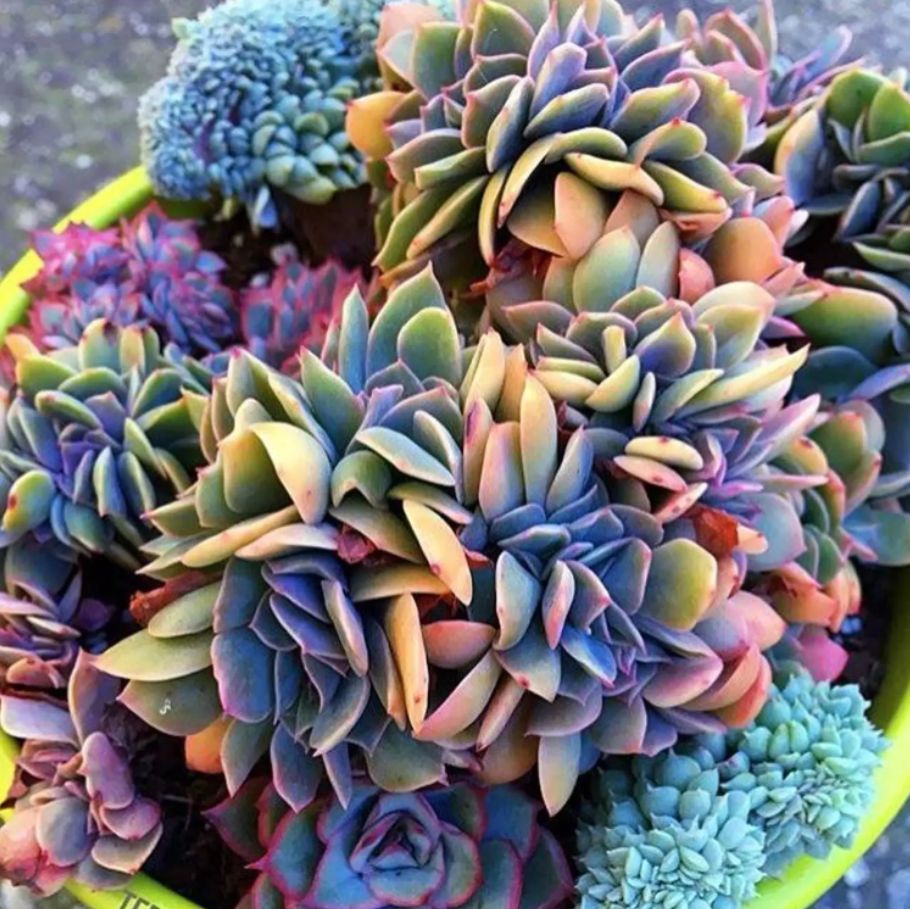
Echeveria ‘Rainbow’ is a variegated Perle Von Nurnberg. The leaves are green and yellow striped with pink highlights. The edges of the leaves have pink bands along them.

Variegated String of Hearts (Ceropegia woodii variegata ‘Pretty Pink’) is a rare pink plant. It has bluish-green leaves with a dark green variegation. The leaves are banded by pink variegation and have pink patches.
Pink Outlines
Echeveria ‘Afterglow’ has wider leaves than many succulents that can be lilac, mauve, or powdery blue. The leaves are outlined in bright pink. The flowers are deep orange.
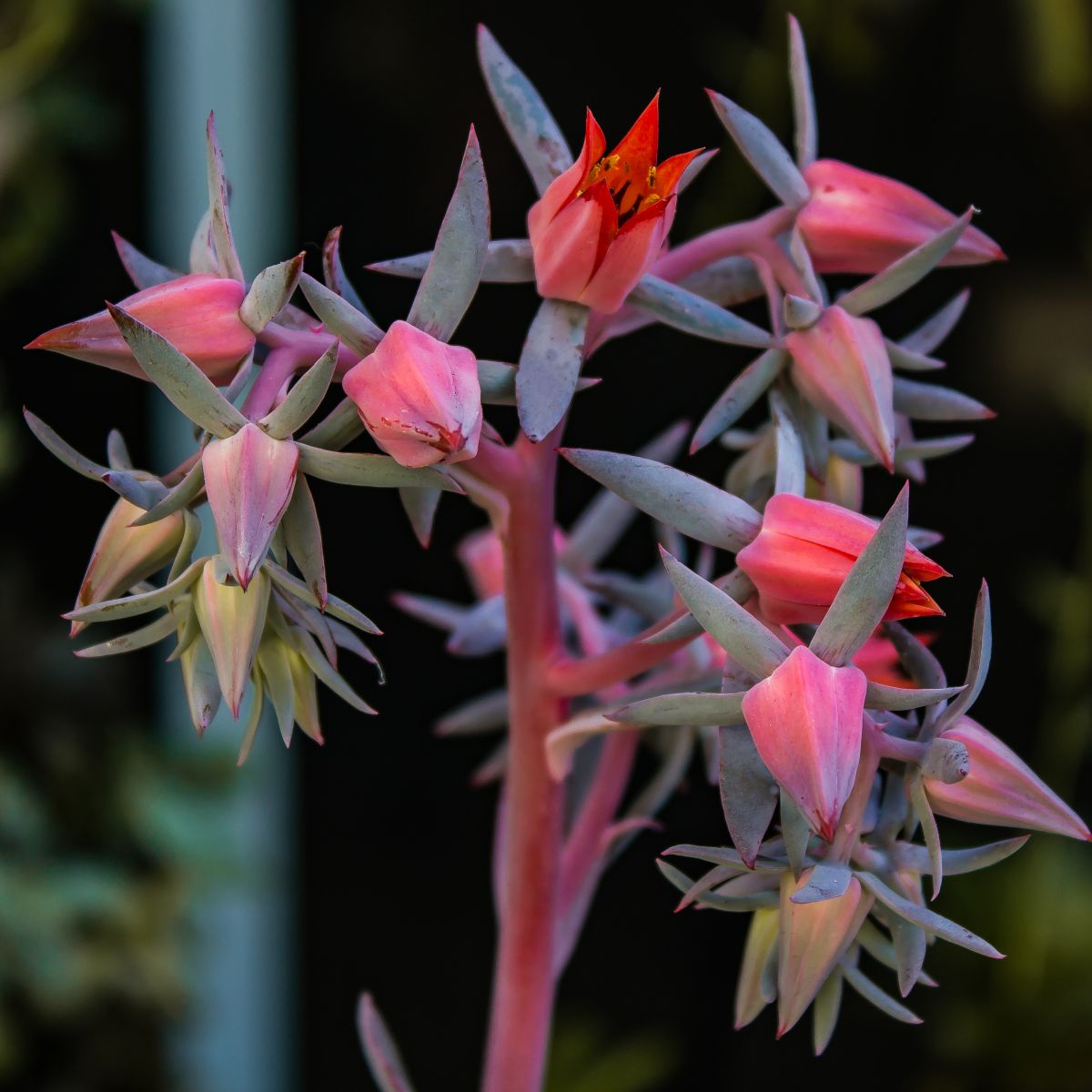
Aloe ‘Pink Blush’ has dark green leaves with lighter green variegation. The edges and tips of the plant are pink.

Echeveria ‘Pink Blue Bird’ has bluish-green leaves with pink edges and a pink spine on the point of the leaf. This is a rare pink succulent from South Korea.
Pink Tips
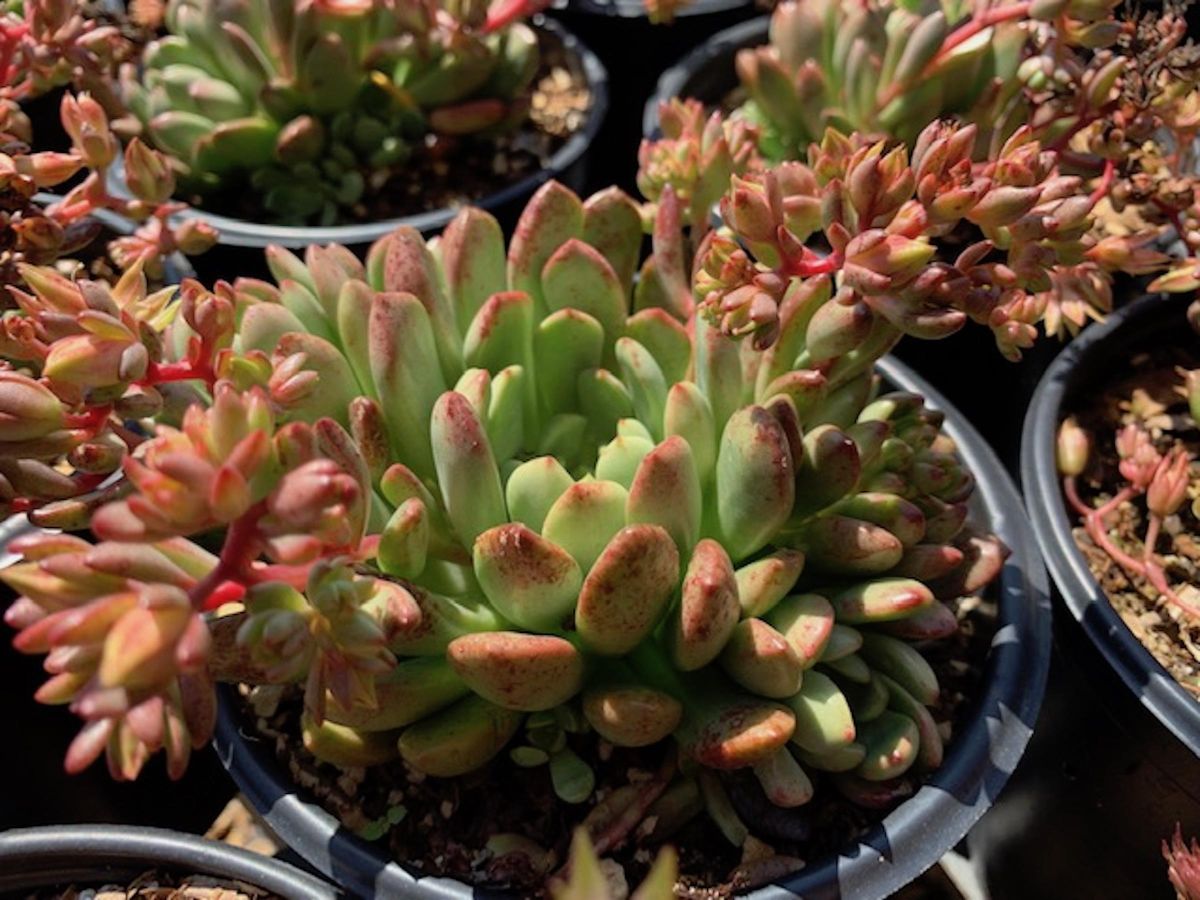
Graptoveria ‘Bashful’ doesn’t have a central stem but just has leaves around a crown. The leaves are green with pink tips. The tips get a darker pink the more sunshine it gets.

Kalanchoe ‘Pink Butterflies‘ is spotted green with pink highlights. The plant forms rosettes that look like pink butterflies resting on the plant.
Frilly In Pink
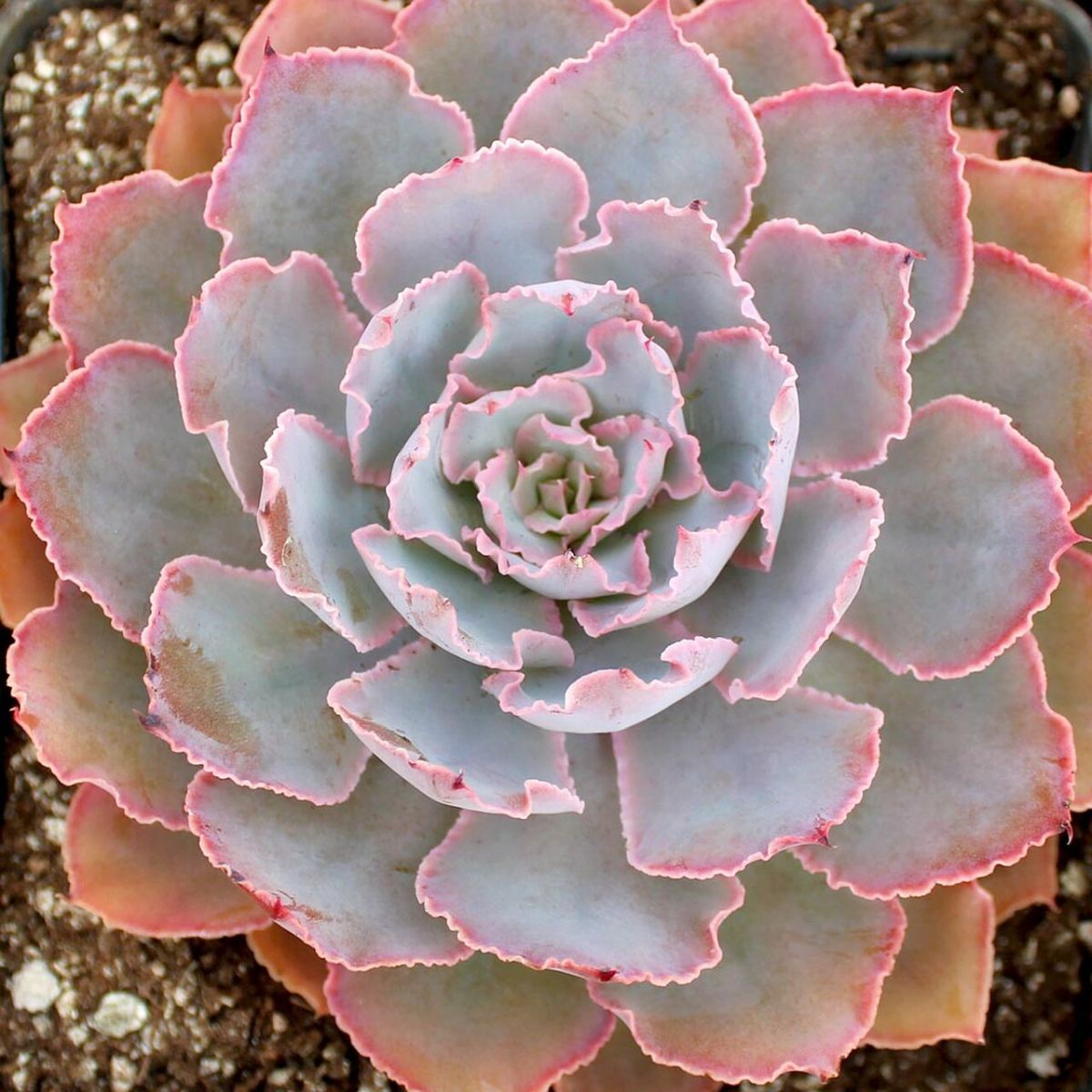
Echeveria shaviana ‘Pink Frills’ looks like a collection of frilly flowers. The leaves are purplish-pink in the center changing to bluish pink on the edges. They are also frilled on the edges.
Pink Blush
These succulents have a blush of pink on them somewhere. This can be on the end of the part of the leaves where they meet the stem or on the tips.

Moonstones (Pachyphytum oviferum) are a small succulent native to Mexico. The leaves have blushes of pink, purple, blue-green, and mauve.

Echeveria ‘Perle Von Nurnberg’ is a grey-green succulent that grows in a rosette pattern. The leaves have blushes of pink or purple. The flower is a bright coral pink.

Pink Rose Succulents (Aeonium aureum) look like tightly furled rosebuds. They are green at first, then turn pink during their dormant season. In the summer, keep them in bright shade so they do not close up. Water them just enough to keep them from wilting. Their growing season starts in October. At this time, resume watering once a week and fertilize with a half-strength liquid fertilizer once green growth appears.
Uses for Pink Succulents
Most pink succulents are small, so they are easy to find places for. If you do not have enough space for all of them in bright indirect sunlight, you can use a full spectrum grow light. With the grow light, you can grow succulents almost anywhere.
Clean The Air Inside
Pink succulents clean the air of toxins and carbon dioxide while emitting oxygen. Place several plants around the room so they can work together and improve the room air.
Relieve Stress
Growing plants has been shown to relieve stress and anxiety. Having a low-maintenance pink succulent garden is a great way to do that.
Mixed Container Garden
Different types of pink succulents are often grown in one container to create more visual interest. Just be sure that all the succulents in the container need similar amounts of light, water, and fertilizer.
Conclusion
Pink succulents are pretty and hardy plants to have in your home or office. Because they require bright light, use a full spectrum grow light in rooms with no windows or inadequate light. Growing pink succulents can relieve stress and improve the air quality in the room.
Frequently Asked Questions
Here are the most frequently asked questions about pink succulents we receive.
Although they may look fake, there are genuine pink succulents.
Some pink succulents are rare, but many are very common. Any place that sells succulents will have at least a few with pink on them.
Pink succulents are readily available at big box stores, nurseries, and online.
Pink succulent seeds are hard to find. Most succulents reproduce by producing baby plants around the bottom of the mother plant. Simply wait until the baby plants have some good roots. Carefully cut the baby plant off of the mother plant and put it in a new pot. Other succulents can be propagated with leaf cuttings.
When your pink succulent loses its pink, the plant needs more sunlight. Place it where it can get bright indirect sunlight for at least six hours a day. Be careful not to put it in direct sunlight or it will get sunburned.
Succulents are adapted to poor soil. Most of them only need to be fertilized at the start of their growing season. Fertilize once with a water-soluble fertilizer formulated for succulents. Use it at half or quarter strength to avoid burning the succulent. Never get fertilizer on the plant leaves or stems, and especially not in the center of the plant.
Not all pink succulents are pet safe. Some are even poisonous to humans. As a general rule, place your succulents out of reach of pets and children.





